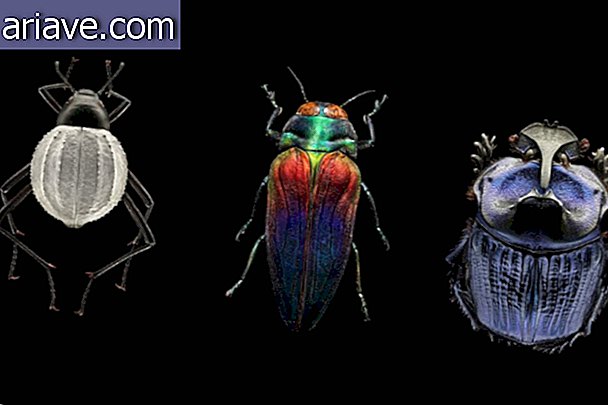7 images of scientific laboratories and their technological equipment
It is in scientific labs around the world that cures, solutions, and new technologies are discovered that often impact our lives significantly. However, we do not always pay attention to the laboratories themselves, more interested in the results offered than in these places themselves.
In other cases, images captured by microscopes also go somewhat unnoticed to people who are not directly involved in chemistry or physics. How about checking out some of the situations that were recorded in these scientific temples?
1 - Brookhaven National Laboratory

One way to focus intense X-ray beams on individual nanometers (very small units of meter) is to wrap them around and bend them into anatomically tiny materials inside the so-called Laue lenses. This makes it possible to see the structures of extremely small materials and to analyze them with greater care and attention. The bubbles in this image were produced by a process called reactive ion registration, which gave rise to these shapes and the false color tone.

In this other case, we see an atomic force microscope capable of recording surface images of atomic resolution matter. The equipment is one of the most widely used probe scanning microscopes (MVS) worldwide. This copy of the Brookhaven National Laboratory is located in a vacuum environment so that there is not the slightest interference from external molecules that could alter the results of the tests performed.
2 - Fermilab Laboratory

Image of Collision Detector at Fermilab Laboratory, located in the United States. This gigantic device is responsible for studying the high-energy particle collisions in Tevatron, one of the largest particle accelerators in the world. The purpose of such an instrument is to study the behavior of numerous heavy and high energy particles.
3 - Los Alamos National Lab

Researchers are investigating details of an astronomical simulation at CAVE, located at the Los Alamos Supercomputer Center. CAVE is an acronym for automatic virtual environment or immersive virtual reality. Several on-site studies are conducted, which can project three-dimensional graphics and images onto their walls so that people can interact with these digital objects.

In this other image we can find the researcher James Wren performing the maintenance of a telescope called RAPTOR, able to capture color cinematic images of gamma-ray bursts.
4 - Oak Ridge Lab

Image of Neutron Spallation Source, located at Oak Ridge Laboratory. The spread It is a process in which fragments of different materials are ejected from a body due to impact or pressure. It is a process in which a heavy nucleus emits a large number of nucleons thanks to the shock of a high-energy particle - a fact that causes the atomic mass of the element to be reduced.
5 - Pacific Northwest

The Pacific Northwest National Laboratory is home to an important study in which low temperature CO2 reactions are being performed. The goal? Ensure that certain amounts of carbon dioxide and other greenhouse gases can be stored underground. In the microscope image, we can see how the forsterite mineral reacts with CO2.











